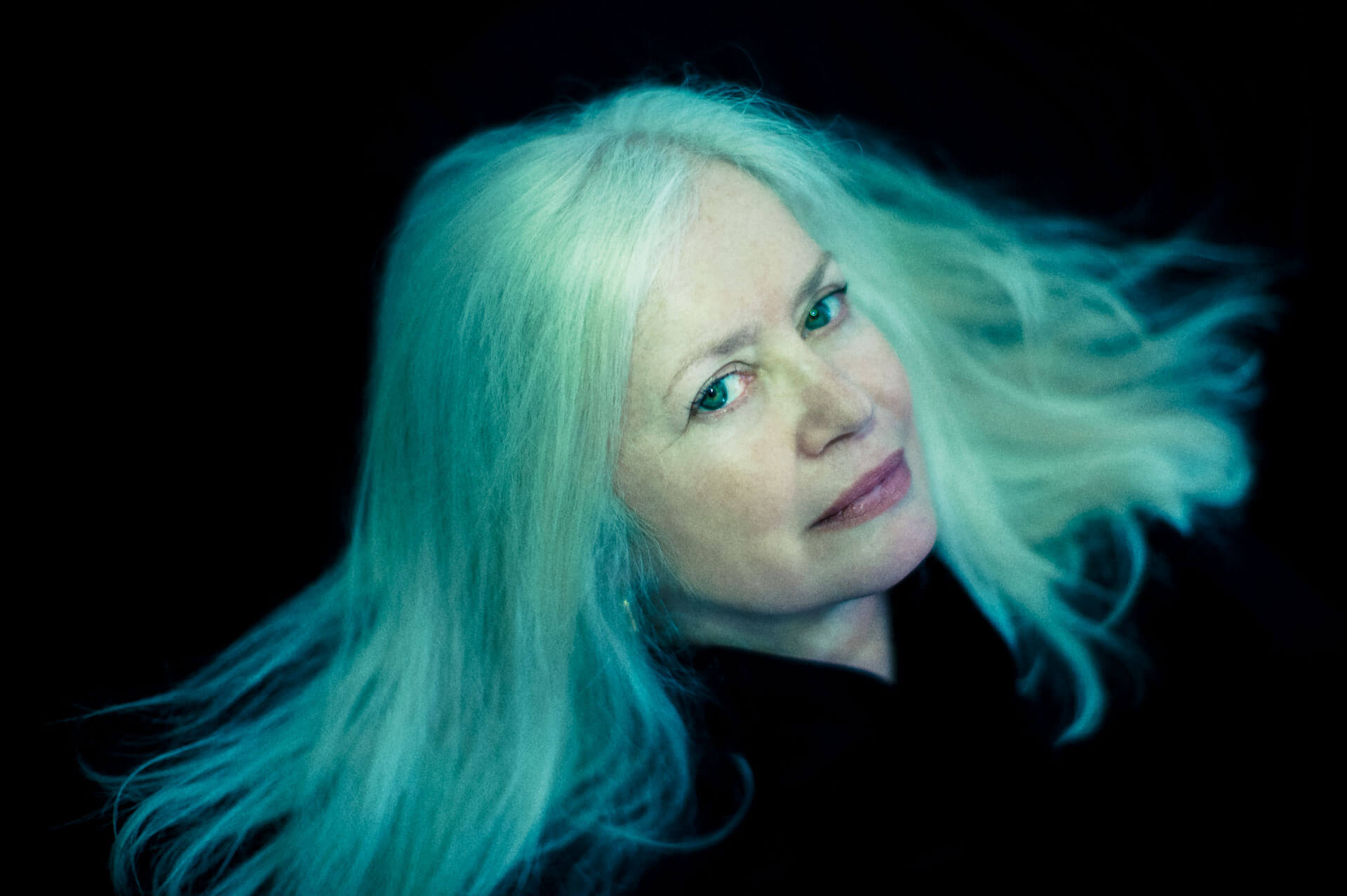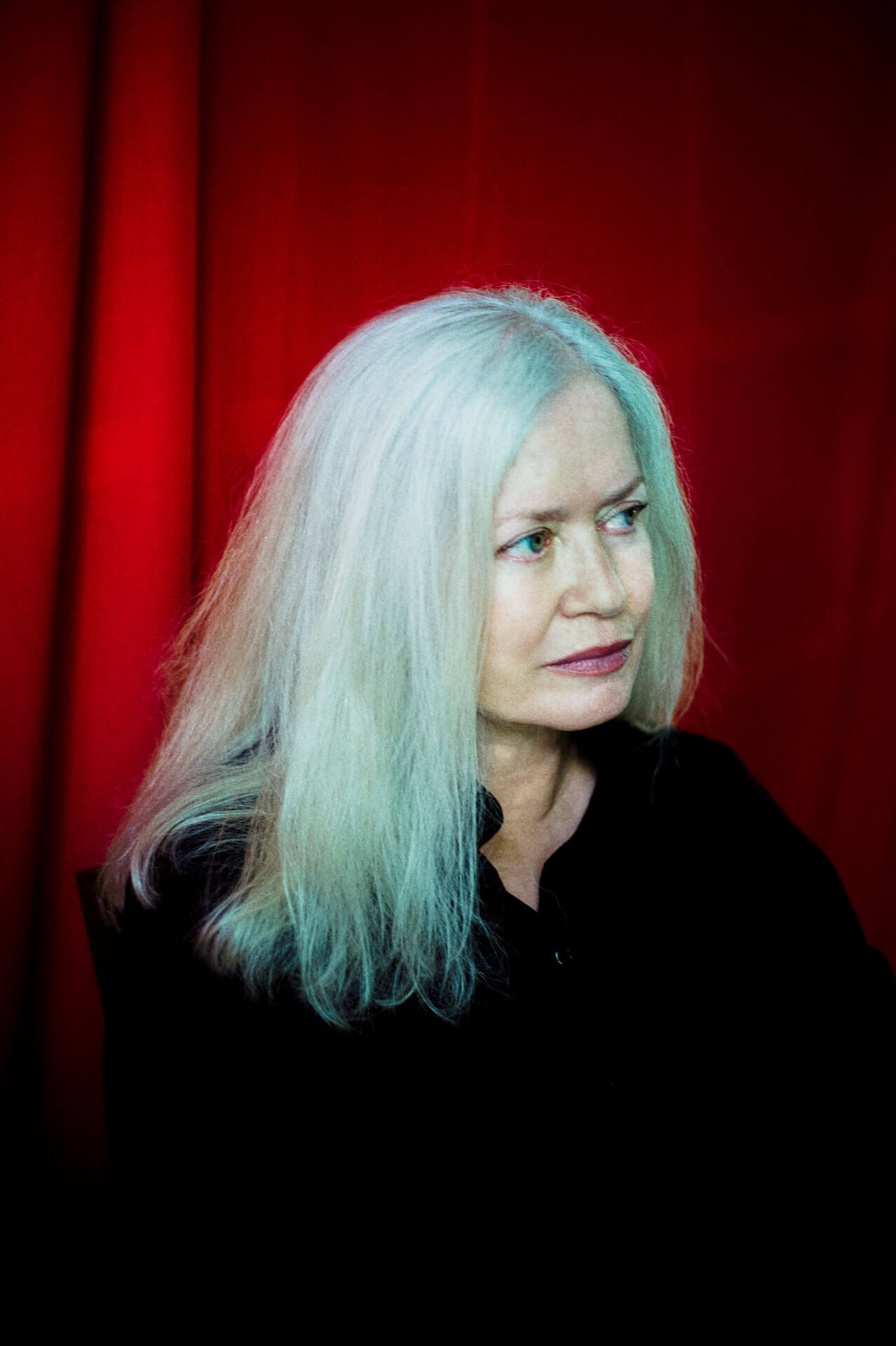Amy Hempel is 69 years old and has recently discovered the beauty of tattoos. On one leg she has inscribed the Arabic proverb giving the title to her latest book: “When danger approaches, sing to it”. A writer who all other writers can only look up to, as stated by Chuck Palahniuk, she’s a tiny woman, with a resolute character. Originally from Chicago, she grew up in California, and in the mid-1970s she moved to New York where she encountered the legendary editor Gordon Lish, a meeting which would leave an indelible mark on her literary formation. Since then, Amy has never left the Big Apple, and today you’re more likely to bump into her walking her dogs in Central Park or on a beach in the Hamptons than anywhere else. Hempel is a big animal lover, a dog lover in particular, and dogs often play a leading part in her stories. As James Wood wrote in the “New Yorker”: “Hempel and dogs go together like Flannery O’Connor and God”.
Multi-award winning doyenne of the short story, Hempel teaches creative writing at Harvard, Princeton and Stony Brook University on Long Island. She has not only published collections of short stories, but also a novella: Reasons to Live (1985), At the Gates of the Animal Kingdom (1990), Tumble Home (1997), The Dog of the Marriage (2005), then all gathered in a single volume published by Scribner (2006). After a decade of silence, her latest formidable collection Sing to It (Scribner) came out last year. Amy Hempel’s stories are always extremely short and mind-blowing, like fireworks. At times they are longer and seductive, but always magically like reality.
Valentina Pigmei: You arrived in NY in the mid-1970s. Did you feel at home straight away?
Amy Hempel: I felt at home the first moment I arrived in New York City. I had been working up to leaving California (both San Francisco and Los Angeles) for a while, and what pushed me to finally get on a plane for Manhattan was the death of my best friend. The day of her funeral I flew to New York for the first time. I arrived on May 1, so the trees in Central Park had most of their leaves, and I remember walking through the city that first night for miles. Back then, NYC still had a pretty bad reputation in terms of crime and being a tough place to live, but I found people were interested in each other and very helpful. I loved it, and felt that it was a place one could never get tired of. That first sense of the city proved to be true.
How did Gordon Lish manage to connect you with NY and its literary world? Is it true that you wouldn’t have become a writer without him?
I would not have become the writer I am had I not studied with Gordon Lish. And while I met many writers with him, both on the page and in person, my literary connection to NYC included many other writers, some of whom I met through friends or just by living in the city. Everyone seemed to show up there at some point, and that is still the case today. I would forget that in much of the rest of the country, one did not have the opportunity to go to readings every night, for example. And there were so many publication parties for writers! There still are. And so many venues with curated reading series.
How much and how has the city changed for you since then?
The city has changed a great deal for me in the 40+ years I have been there. A novelist friend from New Orleans, Nancy Lemann, wrote that “A place is different when you love someone in it.” I think that’s true. Many people I loved there have died, so that changes the feeling of a place. I only knew John Lennon from his music, not personally, but I stood in the park across from The Dakota for the memorial to him after he was killed out front of the building where he lived. And places that were a big part of my life have vanished – some of the small foreign film theaters where you would sit down and then see that Susan Sontag was in the seat in front of you. There are wonderful new places, of course, but I get nostalgic for CBGB’s, for example, where you could see Patti Smith perform years ago. It seems as though a lot of NYC is more “slick” than it used to be. CBGB’s was definitely not slick. And I still remember seeing the work of artists that became instantly important to me, such as early videos by Shirin Neshat that I saw in a gallery in Chelsea.
As a real experimental artist, what do you wish for the cultural and artistic future of NY?
As for the cultural and artistic future of NYC, I think there are always going to be thrilling discoveries in every form of art. I do some work for the American Academy of Arts & Letters that keeps me current on much of the literature from around the country and beyond, and the meetings for members at the Academy are still as exciting to me as when I was inducted as a member, and saw some of my heroes, sat next to them at the dinners – poets and writers including Sharon Olds and Joy Williams. And just a few months ago, I saw a powerful and stunning show at Marlborough by the artist Peter Sacks, from South Africa. I’m talking about work that truly transforms the viewer. Such moments add up over the years in New York City.
Which are your favorite and most inspirational places in NY? Or in the suburbs?
My favorite places in the city include Central Park, the Lower East Side, the Upper West Side. I have always liked walking my dogs along Park Avenue, watching them stop at the buildings where the doormen keep dog treats to hand out – my dogs have a good memory for which buildings are worth stopping at. I like walking into certain churches during a weekday to sit for a while and feel the calm. And I like the East End of Long Island – the Hamptons, where I’m living now – especially during the off season. In summer it’s crowded, but off season there are the extravagant empty beaches that are so beautiful.
Were Grace Paley’s Bronx women a literary model for you?
Grace Paley was one of my first literary heroes. Her voice was profoundly important to me, in every story she wrote. Hers was a kind of hyper-real speech – the way real people sound, only better. As a friend once said, you can learn how to live a life by reading her. And I admired the way her deepest concerns entered her fiction, notably her anti-war stance. But it was never didactic. And she was a no-nonsense perso – she was inspiring as a person as well as being inspiring as a writer.
Do you have a dog now? Is possible for a dog to be happy in the Big Apple?
I am down to just one dog now, a rescued pit bull. I still do dog rescue work, and I used to foster a lot of pit bulls. I travel too much to do that right now, but plan to get back to it. I usually have two dogs of my own, and yes, NYC is a great city for dogs. It’s very stimulating, and if you live near a park it’s easy to get them out for walks. And my point of reference for dogs being happy in the city is: a shelter. Living in a city, in an apartment, is going to be better than living (or dying) in an animal shelter…
If I am not wrong just one of the stories in Sing to It is set in NY. It’s my favorite and it’s about dogs.
In fact, the one story in my new book that is set in NYC is A Full-Service Shelter, based on the kill-shelter in East Harlem where I volunteered for about two years. It is a hellish place, and I have never felt more needed than I did when I was there, caring for the dogs, most of them doomed… but we did get some adopted out of there. I was deeply inspired by the other volunteers and kennel workers I worked with.
Miracles happened, but not enough of them.

